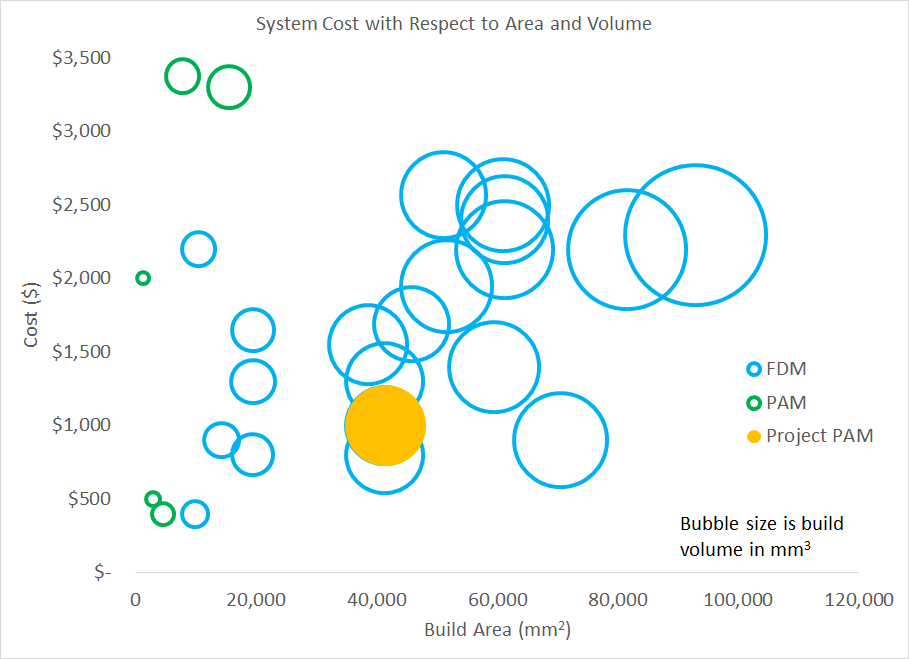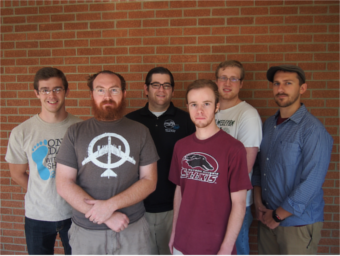Welcome to Project PAM.
PAM stands for Photoresin Additive Manufacturing. This type of 3D printing gets away from the extruded plastic spaghetti machines that we're all familiar with and instead uses light-curing resins to build your models. This means higher resolutions, fewer moving parts, and faster build times and the only jam to worry about is the kind you eat with peanut butter.
Project PAM is seeking to take DLP 3D printing in a new direction of higher build volumes and lower costs without sacrificing resolution. The goal for this project is to produce a high resolution DLP printer that is fully open sourced using off-the-shelf hardware and that is well documented. All design material can be found in either the Hardware Repo or the Software Repo.
If you would like to donate to Project PAM visit our Indiegogo campaign. Any and all donations would be greatly appreciated.
Why Open Source?
We at Project PAM believe that open source is the future. Open source allows people to freely share ideas and information and concentrate on improving the world around us. We are not driven in any way by money, profit margins; but instead motivated by the desire to better the open source and 3D printing community.
There have been many attempts at an open source DLP 3D printer, yet many of those attempts have patents associated to the design, non-commercial licensing, or do not properly host and share their designs. Our first priority when starting out was to keep everything open-source; this includes both hardware and software. To ensure this, we have followed the Open Source Hardware (OSHW) Definition set by the Open Source Hardware Association (OSHA).
Open Source Hardware (OSHW) Statement of Principles 1.0:
Open source hardware is hardware whose design is made publicly available so that anyone can study, modify, distribute, make, and sell the design or hardware based on that design. The hardware’s source, the design from which it is made, is available in the preferred format for making modifications to it. Ideally, open source hardware uses readily-available components and materials, standard processes, open infrastructure, unrestricted content, and open-source design tools to maximize the ability of individuals to make and use hardware. Open source hardware gives people the freedom to control their technology while sharing knowledge and encouraging commerce through the open exchange of designs.
The licenses Project PAM uses are:
- Hardware: CERN OHL v1.2
- Software: GNU GPL 3.0
- Documentation: CC BY-SA 4.0
Tired of Those Stupid Spaghetti Machines?
Photoresin additive manufacturing printers have many advantages over fused deposition manufacturing (FDM) printers. There are fewer moving parts, faster build times, and no jams. Currently there are DLP 3D printers on the market; however, most have either high cost or small build volumes. Our design is low cost ($1000) and also features a build volume comparable to leading FDM printers.

How is our design more flexible?
Project PAM has a build volume of just under 9 liters. We are able to accomplish this by supporting dual 1080p projectors; however, the system is designed to be compatible with projectors of any resolution and also a single projector.
We have designed Project PAM to use mostly off-the-shelf parts that can be bought through Adafruit, Amazon, and industrial supply warehouses. An advantage to using off-the-shelf parts is that the design can be easily modified to suit any needs. We have also used the off-the-self mentality when it comes to the resins we use through the use of Maker Juice G+ resin.
The software Project PAM will be using is based off of the software for the B9 Creator. The software will be modified to be compatible with all projectors and resins. Project PAM will be using Grbl firmware, which unlike the software does not need to be modified to increase compatibility.
Releases
First Release Coming Soon!
Who We Are
We are a team of undergraduate engineering students working on a Senior Design Project at Southern Illinois University Carbondale. We have great passion for advancing the open source and 3D printing community.
- Jeffery Burdick (@burdickjp): Mechanical Engineer, Project Manager
- Nathaniel Tyler (@ntyler): Mechanical Engineer
- Chance Baker (@MrBaker452): Electrical Engineer
- Casey Spencer (@cspence182): Electrical Engineer
- Nicholas Lowman (@namwol): Computer Engineer
- Daniel Olsen (@dan-olsen): Computer Engineer

Contact Us
For general correspondence please email us at projectpam.siu@gmail.com
Questions and comments can be posted on our mailing list or you can email them to projectpam@googlegroups.com
Please report all bugs and feature requests through GitHub issues either on the Software Repo or the Hardware Repo respectably.
Follow us on GitHub, Twitter, Facebook, Google+, and YouTube.